by Andy Green
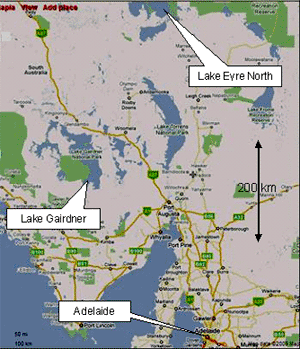 The aim of this trip was to review/survey 4 possible run sites in Australia: Lake Gairdner, Lake Eyre, Island Lagoon and Lake Frome. On arrival in Australia, it became clear that both Island Lagoon and Lake Frome are ‘soft’ lakes and not suitable for BLOODHOUND, so the trip was limited to Lake Gairdner and Lake Eyre. Both these lakes have seen record breakers before: Donald Campbell set a 403 mph World Record on Lake Eyre in 1964, while the Australian record breaker Rosco McGlashan tried running his Aussie Invader jet car at Lake Gairdner in 1996/7.
The aim of this trip was to review/survey 4 possible run sites in Australia: Lake Gairdner, Lake Eyre, Island Lagoon and Lake Frome. On arrival in Australia, it became clear that both Island Lagoon and Lake Frome are ‘soft’ lakes and not suitable for BLOODHOUND, so the trip was limited to Lake Gairdner and Lake Eyre. Both these lakes have seen record breakers before: Donald Campbell set a 403 mph World Record on Lake Eyre in 1964, while the Australian record breaker Rosco McGlashan tried running his Aussie Invader jet car at Lake Gairdner in 1996/7.
Image left: From MultiMap – the lakes are a long way from Adelaide and, for that matter, from the tarmac nearest roads....
Geology and Weather. This area of South Australia is the driest area on earth, and despite an annual rainfall of around 100 mm with an evaporation rate of 2500 mm/year, the lake surfaces can remain surprisingly wet for a long time. Both lakes sit on top of the Great Arterial Basin, the world’s largest underground lake. Weather patterns are also unpredictable, with 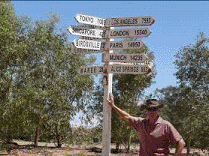 rain possible at any time of the year. When we got there, there had been some rain on both lakes within the previous few weeks.
rain possible at any time of the year. When we got there, there had been some rain on both lakes within the previous few weeks.
Image right: William Creek, South Australia, 200 km from Lake Eyre – and a long way from anywhere else.
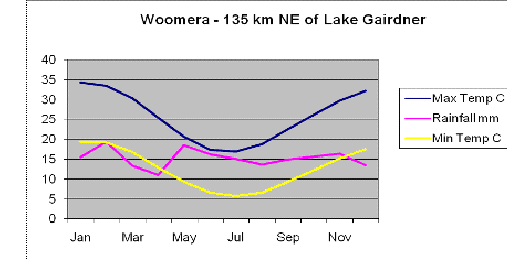
Image left: Woomera rocket test site, where some of the rocket technology we are using was first tested in the 1960s, is dry and hot – and it’s even drier and hotter on the lakes!
The Salt. The surface of both lakes is unlike any others I have seen. While Bonneville is a hard smooth surface with pressure ridges, the top 1-2 cm of these lakes is slightly ‘knobbly’ and without pressure ridges. The surface appears to be made of fine strands of salt, almost like spun sugar, and consists of closely packed small bumps about 1-2 cm across. Unfortunately, the recent rain made both lakes damp and soft in places, but below the top layer the salt is very hard. We have a lot to live up to.
 Location. Both lakes are a LONG way from anywhere! They can only be reached by several hours of driving along progressively narrower gravel and dirt tracks. While Donald Campbell’s 1963 and 1964 runs on Lake Eyre prove that it can be done, shipping a high-tech LSR car out here and running it would be a massive challenge – which makes Campbell’s achievement all those years ago seem even more impressive.
Location. Both lakes are a LONG way from anywhere! They can only be reached by several hours of driving along progressively narrower gravel and dirt tracks. While Donald Campbell’s 1963 and 1964 runs on Lake Eyre prove that it can be done, shipping a high-tech LSR car out here and running it would be a massive challenge – which makes Campbell’s achievement all those years ago seem even more impressive.
Image right: Donald Campbell's Bluebird on Lake Eyre in 1964
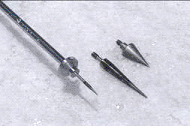 Survey Process. We wanted to see if we could find a way of measuring salt consistency, so we adapted the cone penetrometer with some narrower cones (more like spikes!) and an impact weight. The theory was to measure how many blows it would take to drive the cone into the salt – this is a standard technique for some versions of portable penetrometer. Unfortunately, it didn’t really work: the salt was so hard that the spike would bend on the way in, and then get stuck fast in the rock-hard salt. The few readings that I did take were very consistent – so we weren’t learning much about salt variation along the track either. The other measurement I attempted was to drill through the crust to measure salt thickness. Amazingly, the salt was so hard that the masonry bit that had I brought with me was struggling to get deeper than about 10 cm – we just flattened the cordless drill trying. Below about 2 cm down, this is seriously hard salt!
Survey Process. We wanted to see if we could find a way of measuring salt consistency, so we adapted the cone penetrometer with some narrower cones (more like spikes!) and an impact weight. The theory was to measure how many blows it would take to drive the cone into the salt – this is a standard technique for some versions of portable penetrometer. Unfortunately, it didn’t really work: the salt was so hard that the spike would bend on the way in, and then get stuck fast in the rock-hard salt. The few readings that I did take were very consistent – so we weren’t learning much about salt variation along the track either. The other measurement I attempted was to drill through the crust to measure salt thickness. Amazingly, the salt was so hard that the masonry bit that had I brought with me was struggling to get deeper than about 10 cm – we just flattened the cordless drill trying. Below about 2 cm down, this is seriously hard salt!
Image above: The new ‘spikes’ for the penetrometer – the salt was just too hard for them
Lake Gairdner
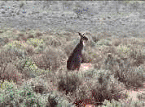 Lake Gairdner is 120 m above sea level and is about 100 km long, but only the southern 20 km or so is useable salt. There is a track across the local land-owner’s property to the edge of the lake, where the salt is hard enough to drive straight out onto it. Driving on the lake surface is for ‘authorised persons only’ – I assumed that we were, so we did.
Lake Gairdner is 120 m above sea level and is about 100 km long, but only the southern 20 km or so is useable salt. There is a track across the local land-owner’s property to the edge of the lake, where the salt is hard enough to drive straight out onto it. Driving on the lake surface is for ‘authorised persons only’ – I assumed that we were, so we did.
Image right: The local population looks on as we approach Lake Gairdner
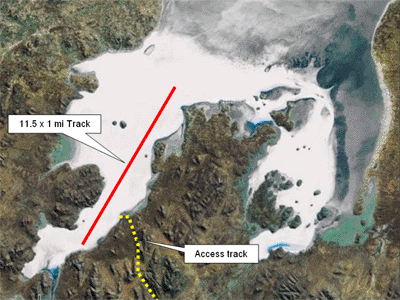 The available length of track was limited by soft salt to the south, north and west, but still left a firm surface of over 11.5 miles long by one mile wide. This is much the same location that the Australian Dry Lakes Racers use when they hold their speed meet at Lake Gairdner in March every year. Of interest, while Australia is fully metric, land speed racers everywhere use miles to measure out their track – there’s something about the record breaker’s ‘flying mile’ that just doesn’t suit metrication!
The available length of track was limited by soft salt to the south, north and west, but still left a firm surface of over 11.5 miles long by one mile wide. This is much the same location that the Australian Dry Lakes Racers use when they hold their speed meet at Lake Gairdner in March every year. Of interest, while Australia is fully metric, land speed racers everywhere use miles to measure out their track – there’s something about the record breaker’s ‘flying mile’ that just doesn’t suit metrication!
The Lake Surface
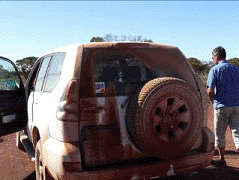 Hardness was very variable due to the recent rain, with large areas of extremely wet salt. Driving on the surface was like driving on slush and above about 30 mph it was very difficult to keep control of the 4WD hire car. Where the surface was dry, though, it was superb – perhaps the best natural salt surface I have seen. Everywhere, the sub-surface salt (2-3 cm down) was very hard.
Hardness was very variable due to the recent rain, with large areas of extremely wet salt. Driving on the surface was like driving on slush and above about 30 mph it was very difficult to keep control of the 4WD hire car. Where the surface was dry, though, it was superb – perhaps the best natural salt surface I have seen. Everywhere, the sub-surface salt (2-3 cm down) was very hard.
Image right: Even the locals stopped to point after we came back from Lake Gairdner. To the nice lady at the hire car desk at Adelaide – sorry!
There was some debris on the surface, mostly small driftwood branches that had been trapped in the salt surface, growing salt humps around them of 5-10 cm in height by 30-100 cm across. Removing them by scraping/dragging should be a fairly simple process.
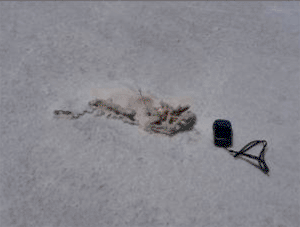 Image left: Small salt mounds form around driftwood etc on the Lake surface
Image left: Small salt mounds form around driftwood etc on the Lake surface
Following the disappointing failure of the ‘new’ test spikes for the penetrometer (which Mark Chapman in the design office put a lot of work into – sorry, Mark) I made up a new test plan, assessing how wet, hard and bumpy the surface was at every mile point along 3 parallel tracks ½ mile apart. The graphs below indicate a smooth surface that is mostly wet and soft – it would need to dry considerably before BLOODHOUND could use it:
 |
 While we were driving up and down the lake, the wind changed and a pool of water (previously too far away to see) suddenly appeared, driven by the wind, and started to cover the northern end of the area. This is a problem that both Rosco McGlashan suffered here in 1996/7 and Donald Campbell suffered on Lake Eyre in 1963/4. It was definitely still too wet for record breaking.
While we were driving up and down the lake, the wind changed and a pool of water (previously too far away to see) suddenly appeared, driven by the wind, and started to cover the northern end of the area. This is a problem that both Rosco McGlashan suffered here in 1996/7 and Donald Campbell suffered on Lake Eyre in 1963/4. It was definitely still too wet for record breaking.
Image left: The wind changed and the tide came rolling in..... the water gradually chased my wife Emma and I across the lake bed.
Lake Eyre
Lake Eyre is one of the world’s largest dry lakes. At 15 m below sea level, it is the lowest point in Australia and one sixth of the continent drains into Lake Eyre, flooding it about once every 8 years. The area has not seen significant rain for about 20 years, but the local farmers are hoping for more anytime soon. You have to be patient about these things in South Australia.
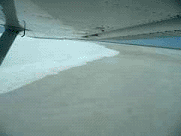 The lake is actually 2 lakes, North and South – the much larger of the 2 is Lake Eyre North, the site of Donald Campbell’s 1963 and 1964 LSR attempts. Lake Eyre is even more remote than Lake Gairdner. The nearest habitation is Muloorina Homestead, where Campbell’s team were based, with a 50 km track to the lake shore (I was glad we had 4WD for this bit). There is no vehicle access onto the lake: Campbell had a causeway constructed for him to get out onto the lake surface, but that is long gone and the salt surface is surrounded on all sides by a soft mud shoreline. The locals tell of digging out vehicles that have tried to cross this mud – the owner of Muloorina took 3 full days to dig out his own Land Rover a few years ago!
The lake is actually 2 lakes, North and South – the much larger of the 2 is Lake Eyre North, the site of Donald Campbell’s 1963 and 1964 LSR attempts. Lake Eyre is even more remote than Lake Gairdner. The nearest habitation is Muloorina Homestead, where Campbell’s team were based, with a 50 km track to the lake shore (I was glad we had 4WD for this bit). There is no vehicle access onto the lake: Campbell had a causeway constructed for him to get out onto the lake surface, but that is long gone and the salt surface is surrounded on all sides by a soft mud shoreline. The locals tell of digging out vehicles that have tried to cross this mud – the owner of Muloorina took 3 full days to dig out his own Land Rover a few years ago!
Image right: The edge of Lake Eyre North, with a wide shoreline of soft mud to the right
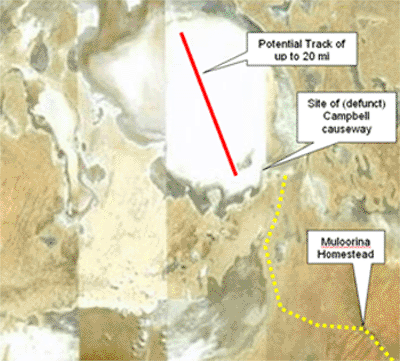 Image left: In the absence of vehicle access, our survey was restricted to an aerial assessment, looking at a high-quality salt surface that appeared to offer a track length of up to 20 miles.
Image left: In the absence of vehicle access, our survey was restricted to an aerial assessment, looking at a high-quality salt surface that appeared to offer a track length of up to 20 miles.
The Lake Surface
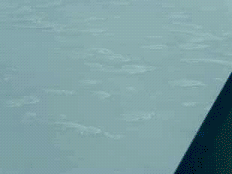 The surface appeared less uniform than that of Lake Gairdner (or at least Gairdner’s dry bits...). Salt ridges and ‘islands’ were visible from the air. Similar features were described by Donald Campbell’s team in the 1960s, requiring specialist machinery to level the surface. In the centre of the lake, very white circles of 1-5 m across were evident. Reports, from both Campbell’s time and more recently, are that the salt is up to 50 cm thick over much of the area: more than enough.
The surface appeared less uniform than that of Lake Gairdner (or at least Gairdner’s dry bits...). Salt ridges and ‘islands’ were visible from the air. Similar features were described by Donald Campbell’s team in the 1960s, requiring specialist machinery to level the surface. In the centre of the lake, very white circles of 1-5 m across were evident. Reports, from both Campbell’s time and more recently, are that the salt is up to 50 cm thick over much of the area: more than enough.
It was ferociously hot out there – 41 deg C in the shade (but of course there isn’t any) and it was still 38 C at 6:30 p.m. Ouch. And the flies…..
Image right: Lake Eyre North with salt 'islands'
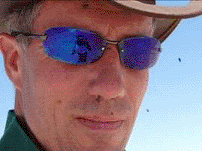 Image left: Open your mouth and the flies climb straight in....
Image left: Open your mouth and the flies climb straight in....
 Image right: The Campbell Memorial at the edge of Lake Eyre. A moving tribute to a famous effort – we have a lot of history to live up to.
Image right: The Campbell Memorial at the edge of Lake Eyre. A moving tribute to a famous effort – we have a lot of history to live up to.
Note to self: there is a <br clear=all> here!
Summary
The main concern now is how often do these surfaces dry? Both have had problems in the past: the dry lakes racers have cancelled their meeting at Lake Gairdner for the last 2 years due to rain, while Rosco McGlashan based his team there for a year and never got the ideal salt conditions he was waiting for. Donald Campbell spent much of 1963/4 at Lake Eyre, also waiting for the perfect conditions that never came. He still managed a World Land Speed Record of 403 mph, but his Bluebird was probably capable of over 450 mph if the salt had been better.
Both lakes looked like they could be fantastic LSR venues, but Australia is a long way to go if you get unlucky with the weather. We’ll be watching it closely from now on.

